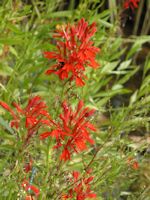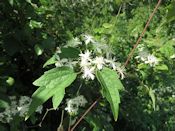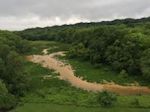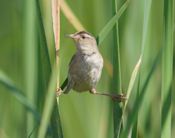Many visitors to Dyke Marsh who walk along the Haul Road trail have questions about the cleared area on the west side of the trail across from “Dead Beaver Beach.”The answer: The National Park Service and FODM are creating a demonstration plat, clearing the area of a massive invasive plant infestation and eventually planting some native plants.
News
The bright, scarlet cardinal flowers (Lobelia cardinalis) blooming in Dyke Marsh in August and September 2017 are delighting many visitors, including migrating hummingbirds. “The tube-shaped flowers have two lips, the upper having two lobes and the lower lip so fragile, many insects cannot land on the plant to reach the nectar,” according to the guidebook, Walking the Wetlands.
A stand of native clematis, Clematis Virginiana, has been growing on a shrub along the “long bridge” (bridge 23) in Dyke Marsh on the Mount Vernon Trail. This is not the same as the non-native clematis that FODM “weed whackers” try to control, a plant called sweet autumn clematis or Clematis Terniflora.
On July 1, 2017, several FODMers and members of the Westgrove PACK (Pumphouse Association for Canine Kindness), the dog park friends’ group, visited the completed Quander Road outfall project, west of the dog park and Dyke Marsh West.
This year, 2017, there seem to be more marsh wrens (Cistothorus palustris) occupying the Dyke Marsh Wildlife Preserve than at any time since 2014 when FODMers last recorded this bird as a breeder. Data from volunteers this year suggest there may be as many as five territorial males in the marsh. This does not necessarily mean the population is recovering. Avian males appear more willing to occupy degraded or marginal habitats than females and, sadly, we have had no reports of females alone or as part of a breeding pair in Dyke Marsh since 2014.
It was all about geology, plants, forests, wetlands, uplands, birds, mammals, reptiles, insects, how everything interrelates and more on the June 10, 2017, ecology walk with Charles Smith, expert naturalist and Chief of Fairfax County’s Stormwater Planning Division, Watershed Projects Implementation Branch.







